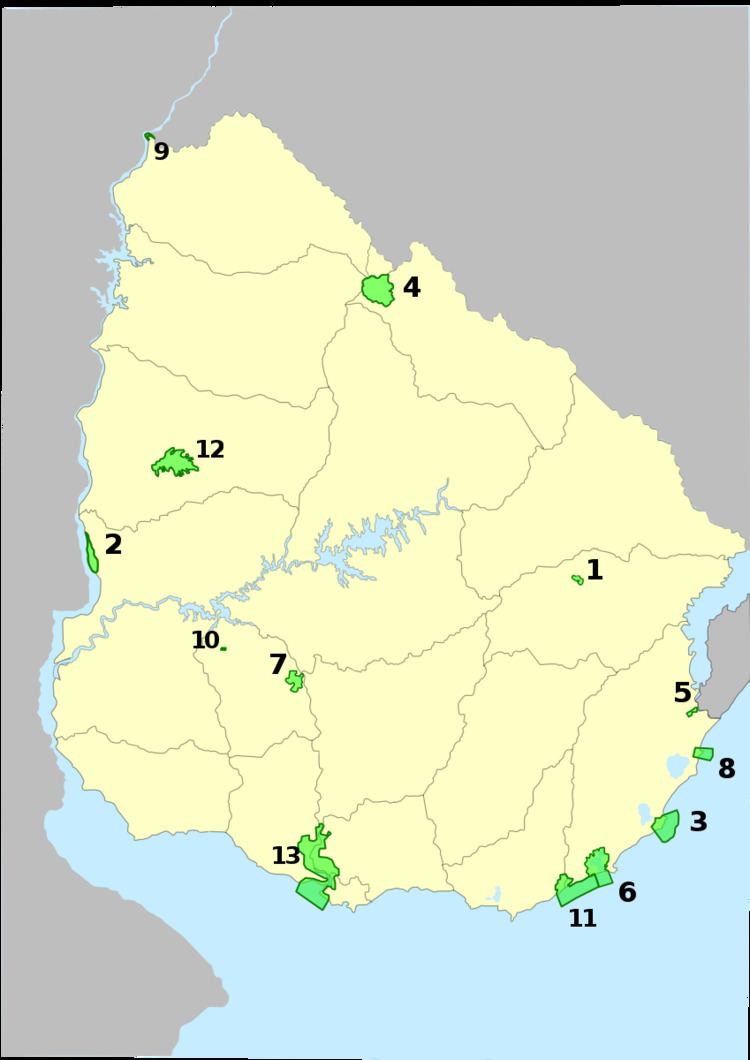 | ||
The National System of Protected Natural Areas of Uruguay (Spanish: Sistema nacional de áreas naturales protegidas de Uruguay, commonly abbreviated as SNAP) is an instrument of policy implementation and national environmental action plans for Uruguay.
Its creation was established by Law 17,234 of February 22, 2000, which was regulated by Executive Decree No. 52/005 of February 16, 2005. This law aims to "harmonize the criteria for planning and managing protected areas under certain categories, with a single regulation that sets the guidelines system" (Art. 1).
Categories
According to Law 17234, four categories of definition and management of the protected natural areas were established (Art.3°):
References
National System of Protected Areas in Uruguay Wikipedia(Text) CC BY-SA
